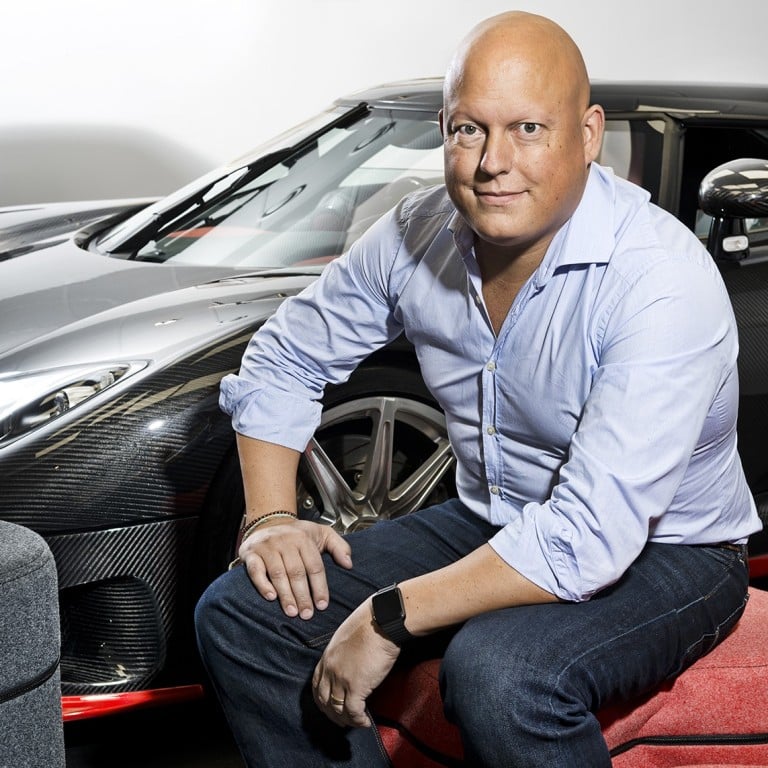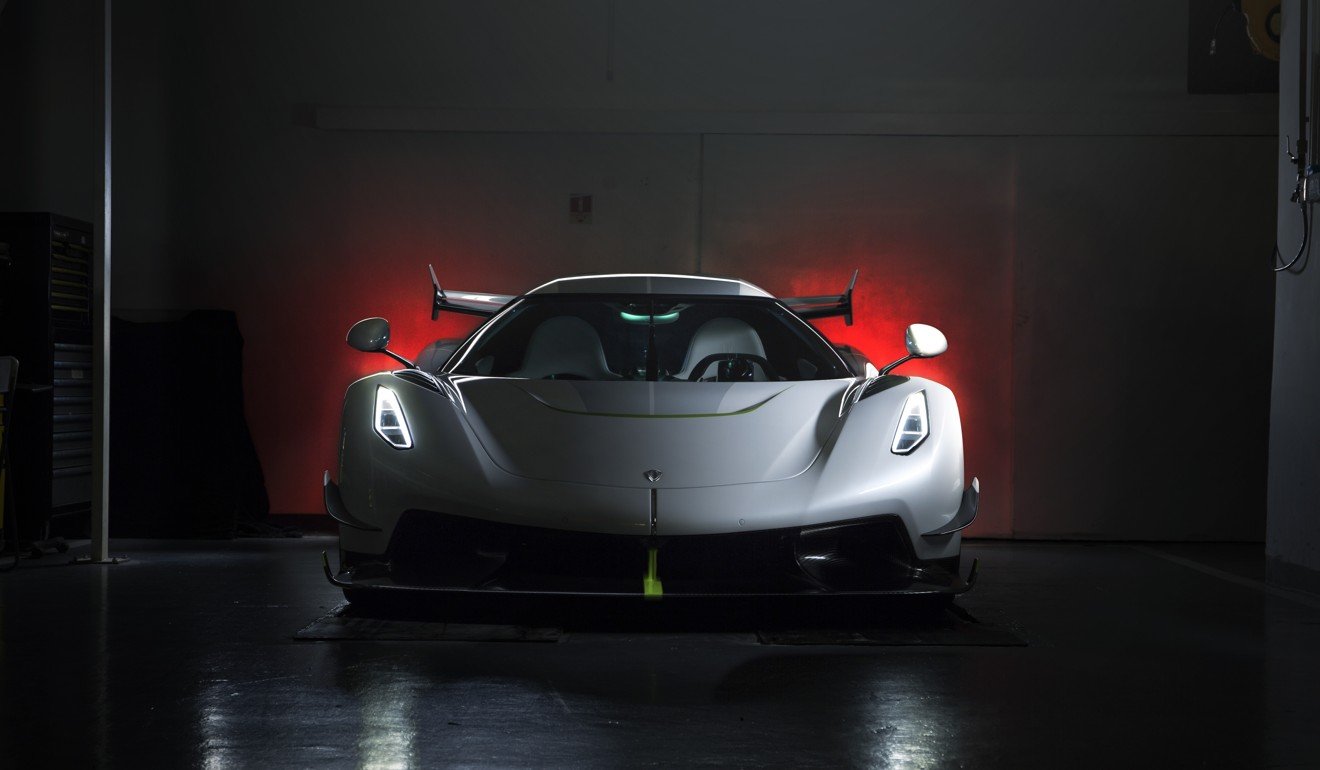Christian von Koenigsegg talks about his un-Swedish passion for designing very fast hypercars

The latest instalment in our On Work / On Play series with luxury CEOs. This month: Christian von Koenigsegg, founder and CEO of Koenigsegg Automotive
ON PLAY
Q. Given your high-octane day job, what do you do to unwind?
A. I build cars to unwind. I ponder about new innovations and solutions. And I spend time with my family, which is super important.
7 art cars to feast your eyes on
Q. What does quality of life mean to you?
A. Being able to do the things you like to do, with the people you like to do them with.
Q. Do you drink – and if so, what’s your tipple of choice?
A. I love a glass of good red wine.
Q. What historical figure would you choose to have a drink (or a coffee or tea) with, if you could?
A. Isaac Newton.
ON WORK
Q. Is it true you invented the MP3 player long before solid state music players existed. How did that happen?
A. Yes this is true! I called it the Chip Player. This was back in 1990 and I was looking at how a normal CD player worked. I understood that the CD disc only contained 1 and 0 and that this information could be stored on a memory chip instead of a disc.
A memory chip in the 1990s could not nearly contain enough data for an EP even, let alone several hundred songs. But it was clear to me that eventually they would and they would be cheap – so it was going to happen. So I guess I was just too early to convince the right people and I did not have any money for a patent application at the time.
The Koeniggsegg Regera costs more than a Lamborghini – and it's now available in Hong Kong
Q. You’re in Hong Kong to unveil the Jesko, a hypercar that you’ve claimed can reach 300mph (480kph), making it the first road legal production car to hit the 300mph barrier. What were the major obstacles you had to overcome in designing this car?
A. There are three, maybe four primary obstacles: power, aerodynamics, tyres and the right road. Two of them are completely within our control. We can design our engine for more power and we can design our car to cut through the air as efficiently as possible. Tyres are something we need a supplier to help us with and we are fortunate to have a great tyre supplier in Michelin. The fourth is a combination of research, cooperation and, in some respects, good fortune.
Q. Do you think Koenigsegg is a typical Swedish firm?
A. It’s perhaps a little un-Swedish to do the things that we do, to stick your head above the parapet as we do. Sweden is a progressive country, but one that frowns upon people thinking they’re more significant than anyone else. The chest-beating that our car invites (not that we indulge in it often) is not typically Swedish.
On the other hand, we are resourceful, design-focused in a practical way, and we have a flat business structure. In those ways we are very Swedish, all of which I consider positive for our business.

Q. Your flagship car, the Regera, is a hybrid. What was the philosophy behind this decision?
A. The electrification of the automobile is something that I consider to be inevitable. The technology is not necessarily where I’d like it to be to go full electric at this point, but it’s progressing quickly.
With the Regera, we sought to dip our toe into electrification while avoiding the weight penalties you get with current battery technology. If we used industry-standard batteries to get the power we’re making in the Regera, it would weigh a lot more than it does. The use of what are basically Formula 1 batteries along with a combustion engine gives us dynamic and visceral performance that we just cannot [achieve] with electric power alone.
How does Trump’s US$1.5 million Cadillac, ‘the Beast’, stack up against Putin’s new Russian limo?
Q. Aside from your research into EVs, what practices has Koenigsegg put in place to improve sustainability?
A. We actually had the world’s first environmentally neutral hypercar – the CCXR – that debuted over 10 years ago. The CCXR was our first car capable of running on E85 biofuel, 85 per cent of which is typically sourced from plants that absorb carbon dioxide as they grow. This balances the emissions of the fuel when it’s burned. We’ve even made a car capable of running on E100, meaning the fuel has a complete carbon-neutral life cycle.
We’ve made biofuel-compatible versions of all our cars ever since. These are flex-fuel vehicles capable of detecting the mix of biofuel and gasoline in the tank and adjusting the engine’s performance accordingly.
Q. What excites you about the Asian market?
A. The Asian market has a lot of potential for sustained growth and an established, vibrant car culture. That’s always an exciting combination.
What’s different about Four Seasons’ new US$147,000-per-person private jet?
Q. What’s been your perception of millennials and Gen Z? Do you feel there’s been a shift to a generational distrust of luxury as a concept?
A. I know this generation is different to mine. I see that in my own children and our friends’ children. They are growing up in a different technological age, one where they don’t buy ‘stuff’ because they can subscribe instead of buying.
But there’s still enough of a market for products like ours. They are priced like luxury products, but they are more of an extreme sport tool. It’s more a statement about technology than a statement about affluence – which I feel also resonates with Gen Z.
Q. Many of Earth’s super-rich – think Elon Musk, Jeff Bezos – have expressed an interest in leaving the planet, and exploring, for example, Mars. Does this appeal to you? Why?
A. I think it is super important to go into space and to create colonies on the moon and Mars to begin with. The most important part of this is to set up a proper asteroid defence system. We are right now incredibly unprotected against unknown and large asteroids that pass by us right now. In order to see them sooner and to be able to intercept better, I believe we need to be out there and a large asteroid cannot hit Mars, the moon and Earth at the same time. Secondly, learning about the universe means we learn about ourselves, we are part of it – not separated. It is just fundamentally important.
JOB EXPERIENCE
1994 – present: Founder & CEO of Koenigsegg Automotive 1991 – 1994: Founder of a trading company
Want more stories like this? Sign up here. Follow STYLE on Facebook, Instagram and Twitter

Koenigsegg Automotive’s founder and CEO is a visionary who builds cars for the future, worries about the planet and would like to have met Isaac Newton